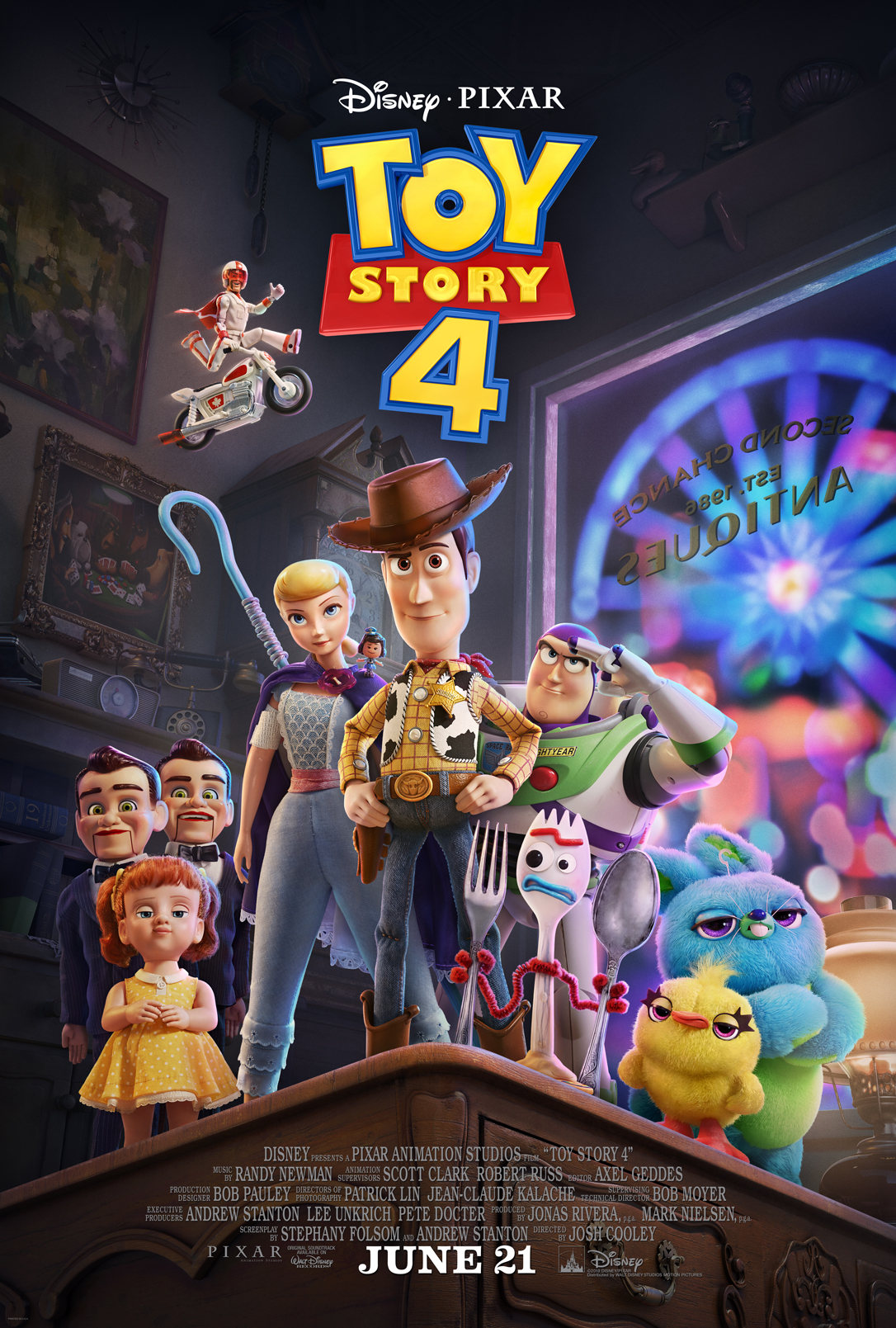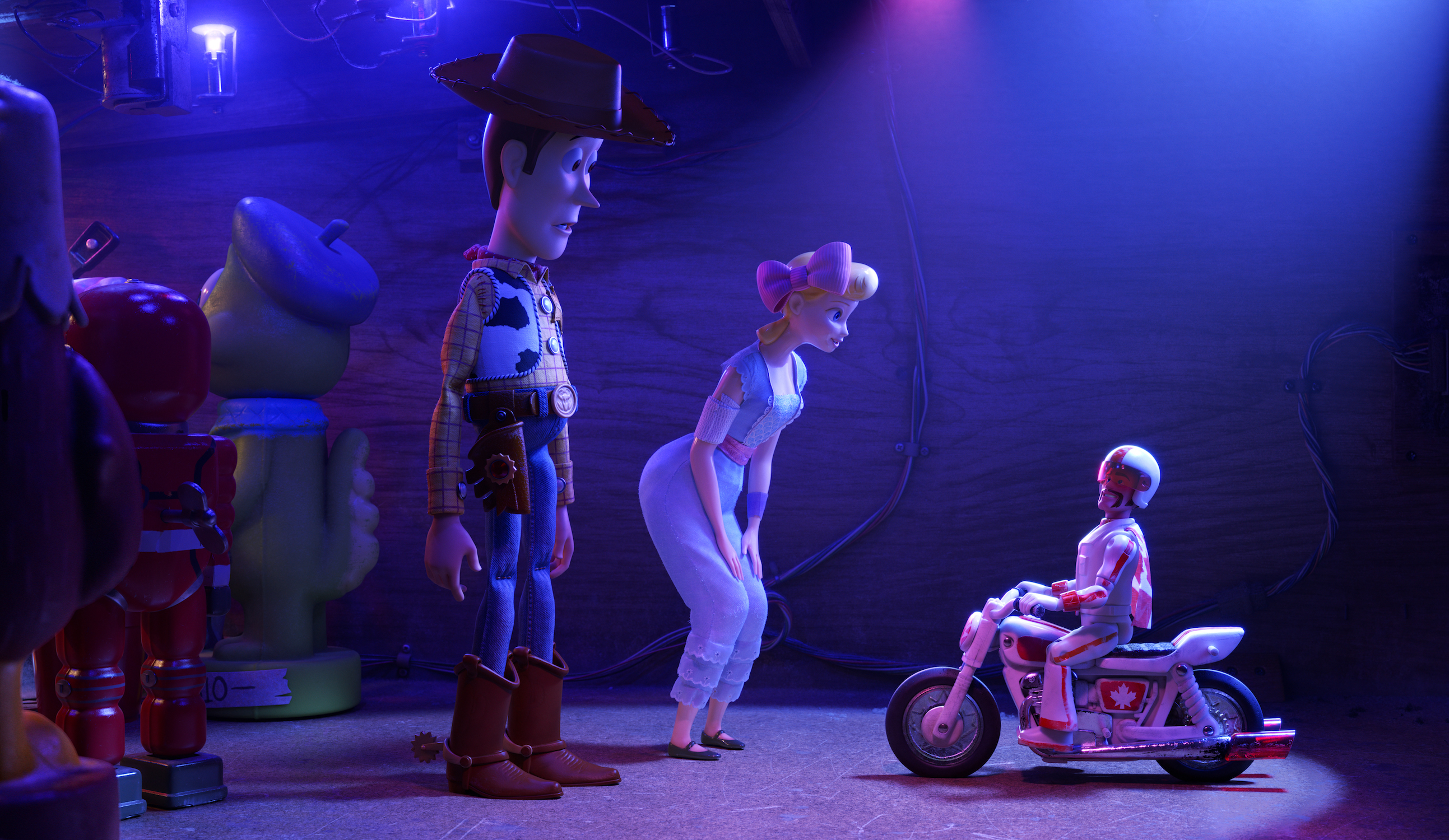America’s favorite sentient playthings are back. But, should they be?
By Cristina Schreil
You remember the scene, from “Toy Story 3” as the toys inched toward the hellfire of a dump incinerator, Woody (Tom Hanks), Buzz Lightyear (Tim Allen), and the gang surrendered. Death loomed. Linking plastic hands in a chain of sadness, they faced their maker.
Of course, they not only survived but received new life, with Bonnie. It was a satisfying end; we knew their “life” cycle would simply repeat. The saga was over.
How odd, then, to see Woody plastered on billboards again. Especially as Pixar has seemingly become a sequel-production machine—“Toy Story 4” is the fourth sequel in four years—one can’t help but ask: Do we need another “Toy Story” movie?

Image courtesy of Disney Pixar.
The premise of “Toy Story 4,” however, is intriguing. It’s built around a long-asked fan question: What happened to Bo Peep? The shiny shepherdess (voiced by Annie Potts) and her ovine trio disappeared sometime between the second and third films. The Pixar team expanded on that fan service, fleshing-out the glimmers of Woody-Bo chemistry into a satisfying new story. It’s the usual alchemical Pixar mix of shenanigans and heart, wrapped in a tight script. As in any smart love story, the real magic isn’t in the romance, but in how each grows from it. We see as things unfold that there’s no way a reunion between Bo and Woody can’t transform both, either forcing growth or dooming them to the limiting beliefs they hold at the film’s start.
Woody has indeed been in a rut. The Bonnie dynasty isn’t blissful after all. He’s still the same loyal toy, but trapped in a one-sided relationship: Bonnie, who’s fonder of Jessie, routinely leaves him in the closet. There, he gathers dust and ponders his purpose. It’s a sobering thing for the sheriff.
Still, clinging hard to his Andy-era role, Woody over-commits to Bonnie’s happiness. This leads him to kindergarten orientation, where Bonnie conjures a new creation out of sundry trash items, including a spork. She christens it “Forky,” who soon sparks to life. And, hates it. Played by Tony Hale—at home as another stunted, neurotic character—Forky bemoans that he exists. “I’m meant for soup!” he cries at one point while trying to throw himself away. The undertone is dark for Pixar. But, Forky’s pitiful crumbling beneath existential woe is indeed funny. His plight to be the trash he knows he is will surely spawn internet memedom.
As Bonnie’s family embarks on a road trip, it’s the sentient spork’s suicidal tendencies that lead Woody to a fated reunion with Bo Peep. Bo has changed over the years. Having traded her bonnet and skirt for pants, she possesses a frontierswoman’s vibe. She keeps her shepherd’s crook, which she wields with Avenger-like agility. While Potts still imbues Bo with a warm heart, she’s lightyears from the damsel in distress Andy often made her. This likely has something to do with director Josh Cooley, who’s said that Bo would have these stronger qualities. She also has a sleeker look, which mirrors the film’s polished, sparkling animation. Things look quite realistic, from the sweeping landscapes to carnival ride details.
Bo is also a staunch realist. This contrasts with Woody, who maintains his blinding optimism and loyalty to Bonnie’s happiness (even when it means hurdle after hurdle.) While Woody fights to keep everyone together, she’s a free spirit, zipping about in a robotic skunk with fellow lost toys. She’s departed from her human-serving purpose. She believes there’s something more.

Photo courtesy of Disney Pixar.
This tension and clash of core perspectives not only shows Pixar at its philosophical best but grounds things amid the usual mischief. Bo makes Woody think outside the toy box. Is he devoted, or just stubborn? Does Bonnie fulfill him, or chain him?
The film’s main conflict concerns Forky, as he becomes held captive in an eerie antique store by a disturbing vintage baby doll named Gabby Gabby (portrayed with layers by a fantastic Christina Hendricks) and her mob of ventriloquist dolls. (Yes, it’s as creepy as it sounds). It’s this Gabby Gabby plotline that highlights toys’ purpose to bring love. It develops richly—and surprisingly.
New characters keep things light and hilarious. Keegan-Michael Key and Jordan Peele are plush carnival prizes with winsome banter yet twisted fantasies of breaking the toy code of silence. Keanu Reeves plays Duke Caboom, a sensational Canadian stuntman action figure. Reeves is just delightful, spewing forth showboating grunts.
The original gang still shines, too. Buzz is more of a sidekick here than a leading character. Although, as Woody tries to free Forky, it’s Buzz—led by his “inner voice,” a fun new concept—who wrangles everyone else to action.
By the end, Woody’s own existential question remains the most interesting aspect. Like many adults might question walking into the theater, he wonders: is there a purpose to him now? As it all reaches a climax that left a little girl next to me sobbing, the answer to the question isn’t yes or no—but by whom.
“Toy Story 4” is now playing in theaters.
